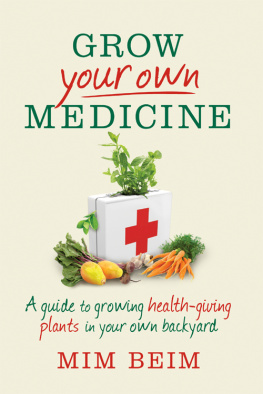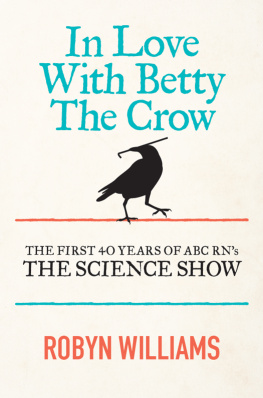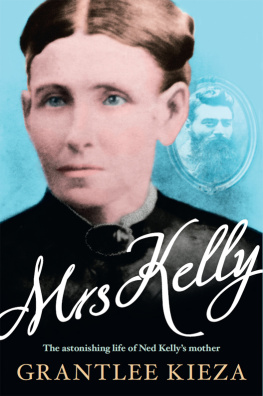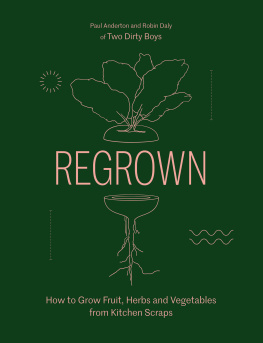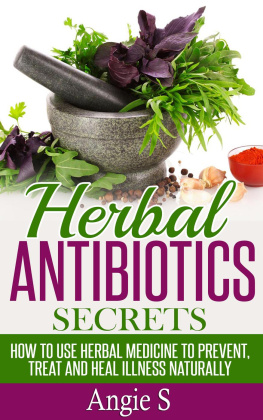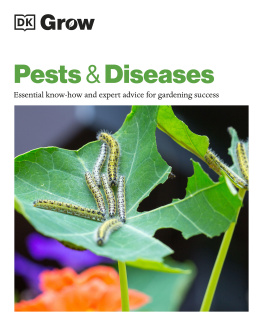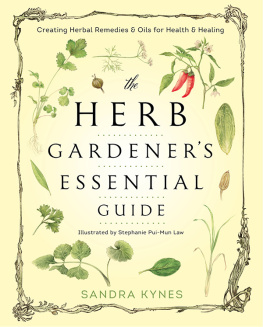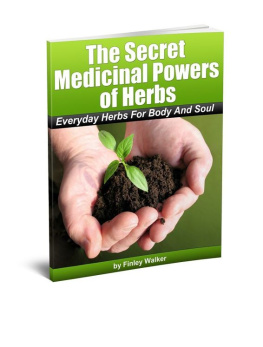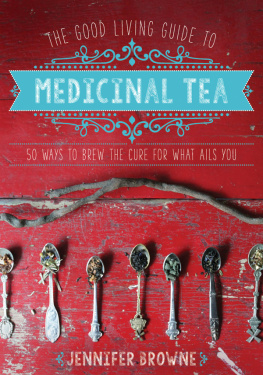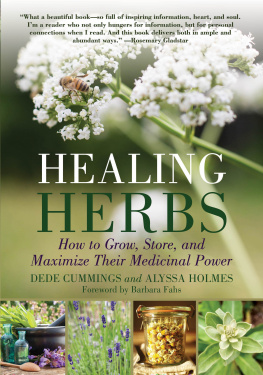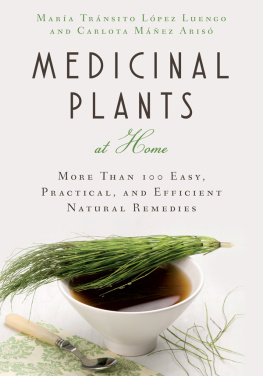Australian Broadcasting Corporation. - Grow Your Own Medicine
Here you can read online Australian Broadcasting Corporation. - Grow Your Own Medicine full text of the book (entire story) in english for free. Download pdf and epub, get meaning, cover and reviews about this ebook. City: Australia;Pymble;N.S.W, year: 2011, publisher: ABC Books, genre: Children. Description of the work, (preface) as well as reviews are available. Best literature library LitArk.com created for fans of good reading and offers a wide selection of genres:
Romance novel
Science fiction
Adventure
Detective
Science
History
Home and family
Prose
Art
Politics
Computer
Non-fiction
Religion
Business
Children
Humor
Choose a favorite category and find really read worthwhile books. Enjoy immersion in the world of imagination, feel the emotions of the characters or learn something new for yourself, make an fascinating discovery.
- Book:Grow Your Own Medicine
- Author:
- Publisher:ABC Books
- Genre:
- Year:2011
- City:Australia;Pymble;N.S.W
- Rating:3 / 5
- Favourites:Add to favourites
- Your mark:
- 60
- 1
- 2
- 3
- 4
- 5
Grow Your Own Medicine: summary, description and annotation
We offer to read an annotation, description, summary or preface (depends on what the author of the book "Grow Your Own Medicine" wrote himself). If you haven't found the necessary information about the book — write in the comments, we will try to find it.
Australian Broadcasting Corporation.: author's other books
Who wrote Grow Your Own Medicine? Find out the surname, the name of the author of the book and a list of all author's works by series.
Grow Your Own Medicine — read online for free the complete book (whole text) full work
Below is the text of the book, divided by pages. System saving the place of the last page read, allows you to conveniently read the book "Grow Your Own Medicine" online for free, without having to search again every time where you left off. Put a bookmark, and you can go to the page where you finished reading at any time.
Font size:
Interval:
Bookmark:
To Bill. My Love.
If Hippocrates, the man who said Let thy food be thy medicine, and thy medicine food, was around today, hed be dancing a jig for joy. There is change afoot. So many more people today are interested in eating fresh, good produce; millions of dollars are being invested in research into the health benefits of food and plants; and, most interestingly, more people are becoming disenchanted with popping pills for a quick fix, and starting to realise that health is a personal responsibility, and that what we eat can influence our wellbeing.
Grow Your Own Medicine is born from this change of thinking. Good health should be our natural condition. Illness is a sign of imbalance. If a good diet, exercise and emotional wellbeing are not enough to redress this imbalance, medicine may be required. Plant medicine is humankinds oldest form of healing. It suits a wide range of conditions. And you can grow it in your own backyard or on your balcony.
The simple activity that is capable of sustaining life, that is, the tending of plants, is almost instinctive, but once you begin this addictive pastime you realise there is much to learn. From the nature of individual plants to the importance of soil quality, and from which insects are to be encouraged and which shunned, to perfecting the art of composting, you will find your garden flourishes with your increasing knowledge. There are few things more fulfilling than planting a tiny seed in the soil and watching as it grows, transforming into a beautiful plant. But, much like life really, the journey that is gardening is strewn with delights and frustrations. One moment you could be enjoying the fruit of your labour nibbling on a leaf of rocket, or admiring the beauty of echinacea flowers you have grown from seed and the next, mourning the loss of an entire carrot crop, or dealing with a plague of thrips. Gardening is its own form of therapy. And growing medicinal plants nourishes the soul and the body.
If you would like more energy, want to prevent and treat illness or injury, and encourage a deeper connection to the earth, Grow Your Own Medicine is for you.
HEALING WITH NATURE
Plant medicine, or phytomedicine, is humankinds oldest form of medicine. We have always used the food and herbs we have cultivated or collected to heal our various ills. tzi, the 5000-year-old Neolithic man discovered buried frozen solid in the Austrian Alps, was found to have eaten birch leaves just before his death. Birch leaves are a remedy for treating intestinal parasites, still used today in that region. Unfortunately, tzi died from a blow to the head before he could thank his local herbalist.
Modern plant medicine is now backed up by rigorous scientific studies. For example, St Johns wort has been found to be as effective as Prozac for mild to moderate depression. In Germany today, St Johns wort makes up 25 per cent of all prescriptions for depression by MDs.
Unlike todays mainstream medicine, which is often based on treating one symptom in isolation, plant medicine is focused on harnessing the bodys innate urge towards wellness, also known as life force. For instance, for a bad chest cold, rather than treating with antibiotics, plants such as echinacea or garlic will not only be antibiotic (kill the germs), they will also increase the activity of the bodys immune system, helping to beat this infection and ward off future ones. This is not to say that antibiotics are not indicated in many conditions, but its rather nice to have a range of options. Natural medicine in general aims at treating the cause of illness, as well as the symptoms.
The body likes to maintain a state of balance. This is called homeostasis. Our body temperature averages 37.5C. A few degrees hotter, we have a fever; a few degrees colder, we will suffer hypothermia both potentially fatal. The same relatively narrow band applies to blood pressure, blood glucose level, hormones and pH. In good health we are magicians at walking the tightrope of homeostasis. Plant medicine helps us maintain this balance.
Over 30 per cent of the pharmaceutical drugs used today started life inside a plant, including aspirin and digoxin. The original plant material has been transformed into very small compounds that can often be created synthetically in a laboratory. The resulting pharmacological preparation bears no resemblance to the original plant. Herbalists believe that the healing power of plants is down to more than just one chemical, no matter how marvellous that chemical can seem in experiments. Herbalists believe there is a greater power in using the synergy of the whole flower or leaves or indeed whole plant; in other words, the total beneficial effect of the plant is often greater than the sum of the individual chemical parts. Using one chemical in isolation is not as nature intended. The solution is simple: eat and grow vegetables, fruit and herbs; consume them as they grow from the soil; and use these as your medicine.
Grow Your Own Medicine is the complete compendium for those who wish to nourish and heal themselves using plants that can be grown at home.
It is not intended to be read from front to back. Rather, dip into the bits that most interest you. For instance, if you suffer from insomnia, look up insomnia or sleep in the index and be guided to the plants that relieve this condition. Or you could be influenced by your garden. Perhaps it is awash with peppermint? In this case, refer to peppermint in the A to Z of Medicinal Plants, and find out how this herb is good for your health and flatulence.
Part one of Grow Your Own Medicine is about the hands-on process of creating your own medicinal garden. It is aimed at the novice gardener, whether blessed with a large yard or a handkerchief balcony. You will learn about the ins and outs of soils and seeds, which fertilisers are best to use, how to mulch and companion planting who likes whom in the vegie patch. Explore the world of worms and compost and become acquainted with the various common pests and diseases that can blight even the best-tended garden, and how to treat these problems without chemicals.
Once your plants have been harvested, the next adventure begins creating your own medicine. Plant remedies lend themselves to a wide range of applications, from making a soothing cup of chamomile or peppermint tea, or a delicious juice with ginger, carrot and beetroot, to snipping green leaves and freshly grown sprouts for the salad bowl. Then there is the alchemy of making tinctures, a traditional form of herbal medicine, which taste as nasty as good medicine should. Find out about the sticky business of making ointments and creams, good for cuts and sores, or pounding poultices and compresses brilliant for bruises and broken bones.
Part two of the book brings you a host of healing plants, from alfalfa sprouts and pomegranates to dandelions and turmeric. Traditionally known as a materia medica, this section explores the therapeutic nature of each plant. Additionally, it explains which part of the plant to use root, leaf, fruit or flower any historical notes of interest, which conditions are best treated by this plant and in what form tincture, tea, cream, poultice, or just eaten at dinner time. Then follows specific information on growing conditions and any special requirements.
At the beginning of each plant entry there is a handy table which summarises the key points, including how easily grown the plant is and which climate zones are suitable (most plants chosen are relatively easy to grow in Australia). Also here are other plants that are commonly used in combination, which is the way herbalists often create their remedies. For example, aloe vera and calendula are excellent plant partners used together to help heal cuts or mild burns.
Next pageFont size:
Interval:
Bookmark:
Similar books «Grow Your Own Medicine»
Look at similar books to Grow Your Own Medicine. We have selected literature similar in name and meaning in the hope of providing readers with more options to find new, interesting, not yet read works.
Discussion, reviews of the book Grow Your Own Medicine and just readers' own opinions. Leave your comments, write what you think about the work, its meaning or the main characters. Specify what exactly you liked and what you didn't like, and why you think so.

